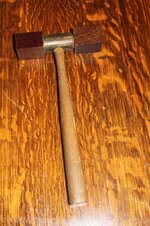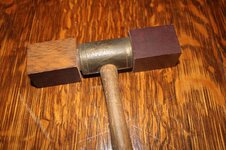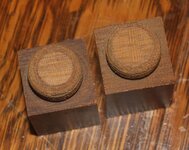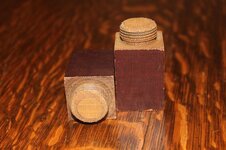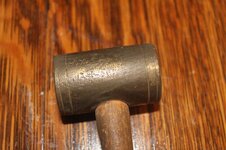Charmin
Bronze Member
- Sep 3, 2007
- 2,284
- 281
- Detector(s) used
- White's Prizm III and Ace 250
- Primary Interest:
- All Treasure Hunting
Got a box of old tools at an estate sale and this was in it. I think its some kind of hammer(?) but not really sure what it could be used for. The square ends are made of wood and they screw into a brass fitting. Each wooden piece has a different design on the four sides. Brass piece has "U.S.A. Pat. Appd. For" on it. Hammer measures 11" long and each wooden piece is 1 1/4" wide. If anyone can tell me what this was used for, I sure would appreciate it! (I will post a couple of pictures and then add more with a reply--my internet service will only upload 2 at a time).
Thanks for looking!
sandcreek
Thanks for looking!
sandcreek


